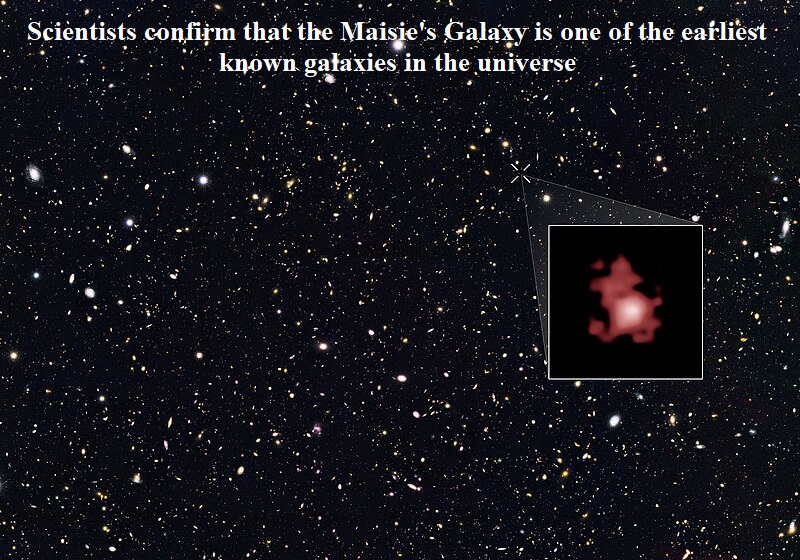
The unveiling of the James Webb Space Telescope (JWST) has been instrumental in unraveling the intricate enigmas concealed within the cosmos. Each instance in which astronomers are privileged to witness the extraordinary cosmological occurrences contributes to shaping humanity’s comprehension of the universe.
The JSWT has now facilitated astronomers in identifying one of the earliest galaxies recognized in the universe, known as Maisie’s Galaxy. This cosmic entity took shape roughly 390 million years after the cataclysmic event known as the Big Bang, a significant benchmark considering that the universe’s age is estimated at 13.77 billion years.
The nomenclature of Maisie’s Galaxy is an homage to the daughter of the project’s principal investigator, Steven Finkelstein, an adept astronomer from the University of Texas at Austin.
The initial image was captured in June 2022 as part of the Cosmic Evolution Early Release Science Survey (CEERS). Recent confirmation validates that the galaxy pinpointed during the preceding summer indeed ranks among the most ancient ever discovered.
Steven Finkelstein remarked, “The exciting thing about Maisie’s galaxy is that it was one of the first distant galaxies identified by JWST, and of that set, it’s the first to actually be spectroscopically confirmed.”
This galactic entity is celebrated as one of the four earliest confirmed galaxies observed by astronomers.
The latest analysis was spearheaded by Pablo Arrabal Haro, a postdoctoral research associate affiliated with the National Science Foundation’s National Optical-Infrared Astronomy Research Laboratory.
The CEERS team is presently appraising approximately 10 additional galaxies that may belong to an era even preceding the existence of Maisie’s Galaxy.
Assessing the temporal framework of galaxies from the early universe presents a formidable challenge due to the universe’s accelerating expansion. Determining the velocity of objects beyond our galaxy necessitates a thoughtful approach.
To ascertain the age of such entities, astronomers rely on redshift calculations—the extent to which an object’s color has shifted due to its motion away from our perspective.
As the universe continuously expands, gazing further into the past corresponds to examining higher redshift values. Previous redshift estimates were derived from photometry, which involves gauging the brightness of light across various wide frequency filters.
These estimations were derived from data gathered by CEERS during the telescope’s initial observing season.
Finkelstein noted that Maisie’s Galaxy presented an intriguing case, stating, “Of the many tens of high redshift candidates that have been observed spectroscopically, this is the only instance of the true redshift being much less than our initial guess.”

Post Your Comments